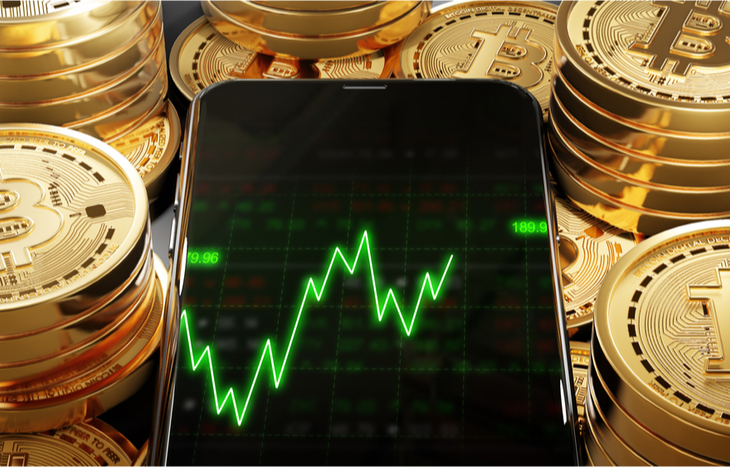In crypto, the slippage is the difference between the average bid or ask price of a trade and the initial sell or market price. Slippage refers to changes in the current price of an asset during the fulfillment of a trade request.
What is Slippage?
In trading, slippage is the difference between the initial or determined buy or sell price and the actual or average price at which all or most of the trade was executed. The slippage causes changes in the calculated number of tokens to be purchased or purchased.
The slippage can be positive or negative depending on its effect on the final trading results. In a positive scenario, the buyer gets more tokens as the average purchase price becomes lower than the current selling price. In a negative shift scenario, the situation is the opposite. The main reason for the slippage in centralized exchanges is the spread between liquidity concentration and order prices. Slippage in decentralized exchanges can be caused by other reasons, including tax contracts on the token’s smart contract.
The slippage on any trading platform can be controlled by changing the trading parameters or using slip control tools if available. Decentralized exchanges allow users to set the maximum slip allowed for their trades using the slip shift feature.

Whether you’re trading a new meme coin with a tax treaty or simply trying to get your trades above the line, slippage will be involved in your final trading results, but they’re not just limited to decentralized exchanges. Slippage is also available on centralized cryptocurrency exchanges and mainstream trading platforms.
It occurs in centralized exchanges when orders at a certain price level are exhausted and trade is near completion by buying or selling assets at higher or lower price levels. This sequential progression in the trading practice causes a gap between the starting or expected price and the average selling or buying price.
In decentralized exchanges, this gap may be created due to insufficient liquidity or due to taxes set in the token’s smart contract. This “gap” is the offset calculated as a percentage. Minimizing slip involves certain technical and procedural adjustments, some of which will be discussed in this article.
How to Calculate Slippage in Crypto
If no limit is placed on the bid or ask prices for a trade, the demand for trading continues at different order levels until the buy limit is exhausted or the order book is completely cleared. The first is the most common result and it means that the trade is split and the partitions are executed at different prices and it applies to trade requests.
The actual price of a transaction is obtained by taking an average price for the entire transaction, taking into account the percentage of the transaction completed at each price. A slippage is said to occur when the resulting average price differs from the market price at the time the order was created.
The percentage slip is calculated by dividing the difference between the initial market price and the calculated average bid (or ask) price by the starting price and multiplying by 100.
For a purchase:
Percent Shift = ((initial market price – average purchase) / initial market price) * 100
If the percentage is a positive number (3 percent, 10 percent, etc.), this is known as a positive shift. If the percentage is a negative number (eg -3 percent, -10 percent, etc.), this is known as a negative shift.
For the sale transaction:
Percent Shift = (average selling price – initial market price / initial market price) * 100
If the percentage is a positive number (3 percent, 20 percent, etc.), this is known as a positive shift. If the percentage is a negative number (eg -3 percent, -20 percent, etc.), this is known as a negative shift.
Types of Slip in Crypto
Positive Shift
In a positive shift, the percent shift is a positive number. In a sell trade, a positive slippage means that the trade is completed at a price higher than the market price at the time it was made, but this scenario is not common. More common is the positive shift in purchases; In this case, the investor buys more assets for less than intended.
Negative Shift
If the average ask price of a trade is lower than the initial market price, this is known as negative slippage. The seller sells the assets at less than the market price. For buy transactions, negative slippage occurs when the investor is forced to buy the asset at an average price higher than the actual market price. The investor buys fewer tokens or spends more to obtain the intended number of tokens.

Why Slippage Occurs?
Slippage in crypto mainly occurs because the order book cannot meet the trade demand at the initial price and resorts to going up or down the ledger to complete the trade. This is only possible where the trade has no set limit and the order flows freely throughout the books. Situations that can create slippage in crypto include:
Insufficient Liquidity
Liquidity for a traded asset is the amount or density of buy and sell orders at any given time. This defines the value of the trade that can be executed without the order books significantly changing. If liquidity is sufficient, significant trades will be completed with minimal changes to the order book. In the absence of this, a significant shift can occur.
Irregular Order Book Distribution
Even in the presence of a sufficient order for a trade, the spread can also cause significant slippage to occur. This is more common on centralized exchanges. For example, there may be only a few orders in the current market and most of the orders are concentrated at other price levels that differ significantly from each other. Irregular spread means that orders at the initial price are filled and cause a significant slippage as the trade progresses to other levels to complete.
Management Market Conditions
During periods of high volatility, there may be some drastic changes in the order books due to the imbalance between demand and supply. As more buy orders flow into the market at times of high demand, there is a high probability of slippage as the order books are wiped out and the price pushes even higher. The same principle applies in cases where there is a lot of sales demand.
In decentralized exchanges, setting a high slip tolerance allows the protocol to quickly monitor transactions in a volatile market conditions, while the investor pays the ultimate fee of losing some of their assets due to slippage and paying more for the trade. This leads to a practice known as front running.
Smart Contract Taxes
New developments in smart contract and DeFi make it possible for smart contract token creators to add a taxation clause to the token contract, which is enforced on transfers and trades on decentralized exchanges. The tax clause allows the government machine to deduct a certain percentage of traded tokens for each trade transfer.
To implement this on decentralized exchanges, the investor must set the slip tolerance to a level equal to or above the total smart contract tax. That is, if a token’s total tax requirement is 12 percent, the investor must set the slippage tolerance to at least 12 percent.




